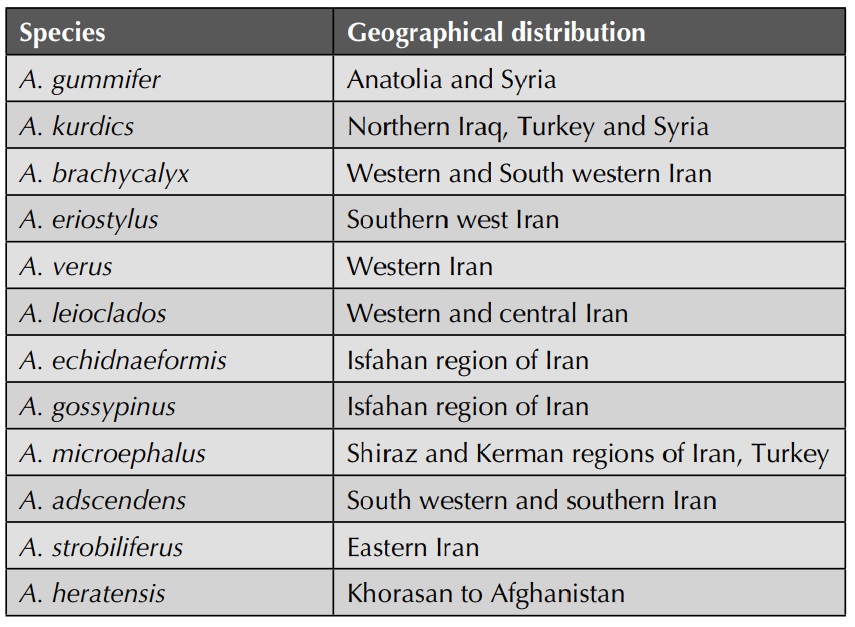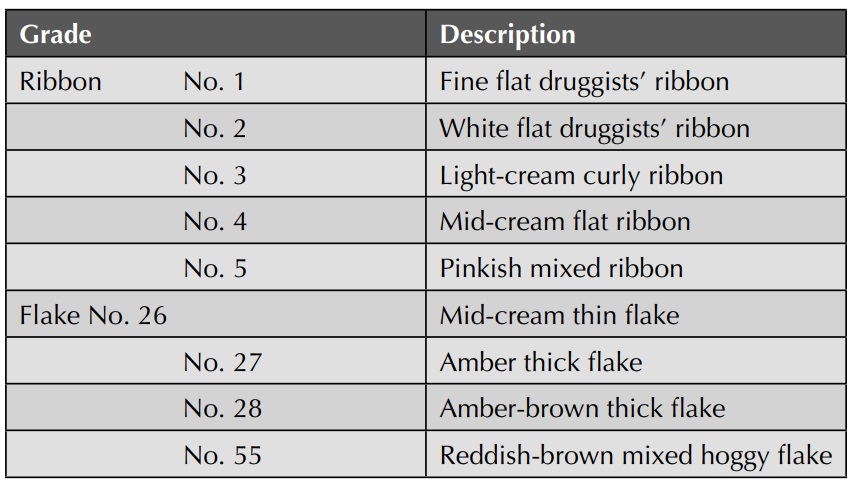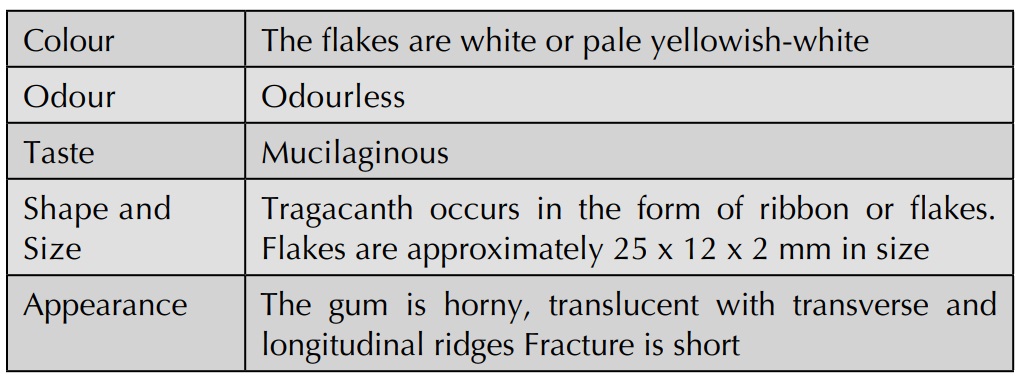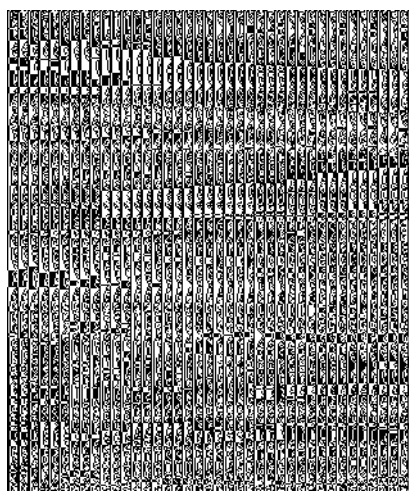Tragacanth
| Home | | Pharmacognosy |Chapter: Pharmacognosy and Phytochemistry : Drugs Containing Carbohydrates and Derived Products
It is the air dried gummy exudates, flowing naturally or obtained by incision, from the stems and branches of Astra-galus gummifer Labill and certain other species of Astragalus, belonging to family Leguminosae.
TRAGACANTH
Synonyms
Goat’s thorn, gum dragon, gum tragacanth, hog gum.
Biological Source
It is the air dried gummy exudates, flowing naturally or
obtained by incision, from the stems and branches of Astra-galus gummifer Labill and certain other species of Astragalus, belonging to family Leguminosae.
Geographical Source
Various species of Astragalus
which yield gum are abundantly found in the mountainous region of Turkey,
Syria, Iran, Iraq and the former U.S.S.R. at an altitude of about 1,000–3,000
m. Two important varieties of tragacanth, that is, Persian tragacanth and
Smyrana or Anatolian tragacanth come from Iran and turkey respectively. In
India it is found wild in Kumaon and Garhwal region.
The approximate distribution of a number of gum-producing
species found in the areas where tragacanth is collected is shown in Table below.
Table : Distribution of gum producing Astragalus species.

Cultivation, Collection and Preparation
Most of the plants from which tragacanth is collected grow
at an altitude of 1,000–3,000 m. The shrubs are very thorny; each of their
compound leaves has a stout, sharply pointed rachis which persists after the
fall of the leaflets. The mode of collection varies somewhat in different
districts, but the following details of collection in the province of Far are
typical.
Gums can be obtained from the plants in their first year but
is then said to be of poor quality and unfit for commercial use. The plants
are therefore tapped in the second year. The earth is taken away from the base
to depth of 5 cm, and the exposed part is incised with a sharp knife having a
thin cutting edge. A wedge-shaped piece of wood is used by the collector to
force open the incision so that the gum exudes more freely. The wedge is
generally left in the cut for some 12–24 h before being withdrawn. The gum
exudes and is collected 2 days after the incision.
Some of the plants are burned at the top after having had
the incision made. The plant then sickens and gives off a greater quantity of
gum. However, this practice is not universal, as many plants can not recover
their strength and are killed by the burning. The gum obtained after burning is
of lower quality than that obtained by incision only, and is reddish and dirty
looking. The crop becomes available in August–September.
After collection, the gum is graded as ribbons and flakes
which are further categorized into various sub-grades on the basis of shape,
size and colour (Table below). The best grades form the official drug, while
the lower grades are used in the food, textile and other industries.
Table : Grades of Tragacanth



Astragalus gummifer
Chemical Constituents
Interestingly, tragacanth comprises two vital fractions:
first, being water soluble and is termed as ‘tragacanthin’ and the second,
being water insoluble and is known as ‘bassorin’. Both are not soluble in
alcohol. The said two components may be separated by carrying out the simple
filtration of very dilute mucilage of tragacanth and are found to be present in
concentrations ranging from 60% to 70% for bassorin and 30–40% for
tragacanthin. Bassorin actually gets swelled up in water to form a gel, whereas
tragacanthin forms an instant colloidal solution. It has been established that
no methoxyl groups are present in the tragacanthin fraction, whereas the
bassorin fraction comprised approximately 5.38% methoxyl moieties. Rowson
(1937) suggested that the gums having higher methoxyl content, that is,
possessing higher bassorin contents yielded the most viscous mucilage.
Tragacanth gum is composed mainly of sugars and uronic acid
units and can be divided into three types of constituents. The acidic constituents
tragacanthic acid on hydrolysis yields galactose, xylose and galacturonic acid.
A neutral polysaccharide affords galactose and arabinose after its hydrolysis
while a third type is believed to be steroidal glycoside.
Chemical Tests
1. An aqueous solution of tragacanth on
boiling with conc. HCl does not develop a red colour.
2. It does not produce red colour with
ruthenium red solution.
3. When a solution of tragacanth is
boiled with few drops of FeCl3 [aqueous 10% (w/v)], it produces a
deep-yellow precipitate.
4. It gives a heavy precipitate with
lead acetate.
5. When tragacanth and precipitated
copper oxide are made to dissolve in conc. NH4OH, it yields a meager
precipitate.
Uses
It is used as a demulcent in cough and cold preparations and
to manage diarrhoea. It is used as an emollient in cosmetics. Tragacanth is
used as a thickening, suspending and as an emulsifying agent. It is used along
with acacia as a suspending agent. Mucilage of tragacanth is used as a binding
agent in the tablets and also as an excipient in the pills. Tragacanth powder
is used as an adhesive. It is also used in lotions for external use and also in
spermicidal jellies. It is also used as a stabilizer for ice cream in
0.2–0.3% concentration and also in sauces. Tragacanth has been
reported to inhibit the growth of cancer cells in vitro and in vivo.
Adulterant and Substitutes
Tragacanth gum of lower grades known as hog tragacanth is
used in textile industry and in the manufacture of pickles. The gum varies from
yellowish brown to almost black. Citral gum obtained from A. strobiliferus is also used as an adulterant.
Karaya gum which is sometimes known as sterculia gum or
Indian tragacanth is invariably used as a substitute for gum tragacanth.
Toxicology
Tragacanth is generally recognized as safe (GRAS) in the
United States for food use. There is no indication that dietary supplementation
for up to 21 days has any significant adverse effects in man. Tragacanth is
highly susceptible to bacterial degradation and preparations contaminated with
enterobecteria have been reported to have caused fetal deaths when administered
intraperitoneally (i.p.) to preg-nant mice. A cross sensitivity to the
asthma-induced effects of quillaja bark has been observed for gum tragacanth.
